6 Head-Turning Design Shows to Catch This June
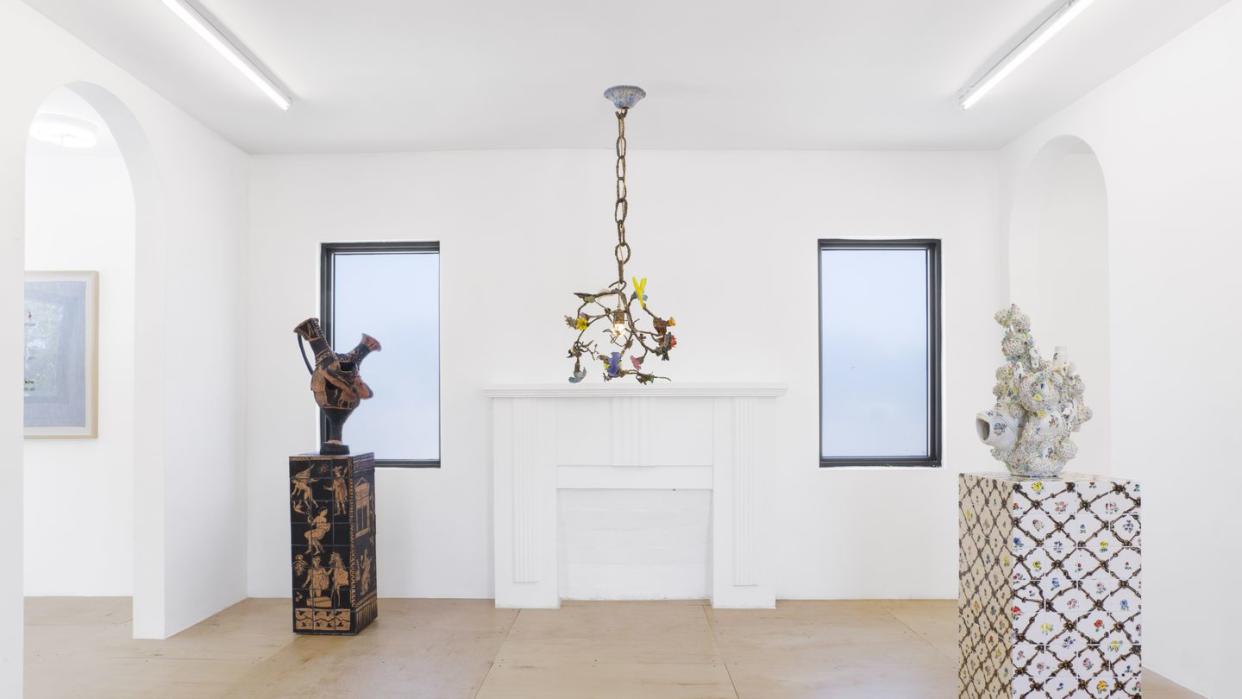
This June we’re spreading our wings wide, seeing exhibitions on ancient glass, assemblages of contemporary craft in historic settings, and shows that playfully interrogate domestic mediums. The summer’s amping up to be a wild ride. We hope you’ll join us for the festivities.
Black Lands by Kinfolk at Tribeca Film Festival
New York City
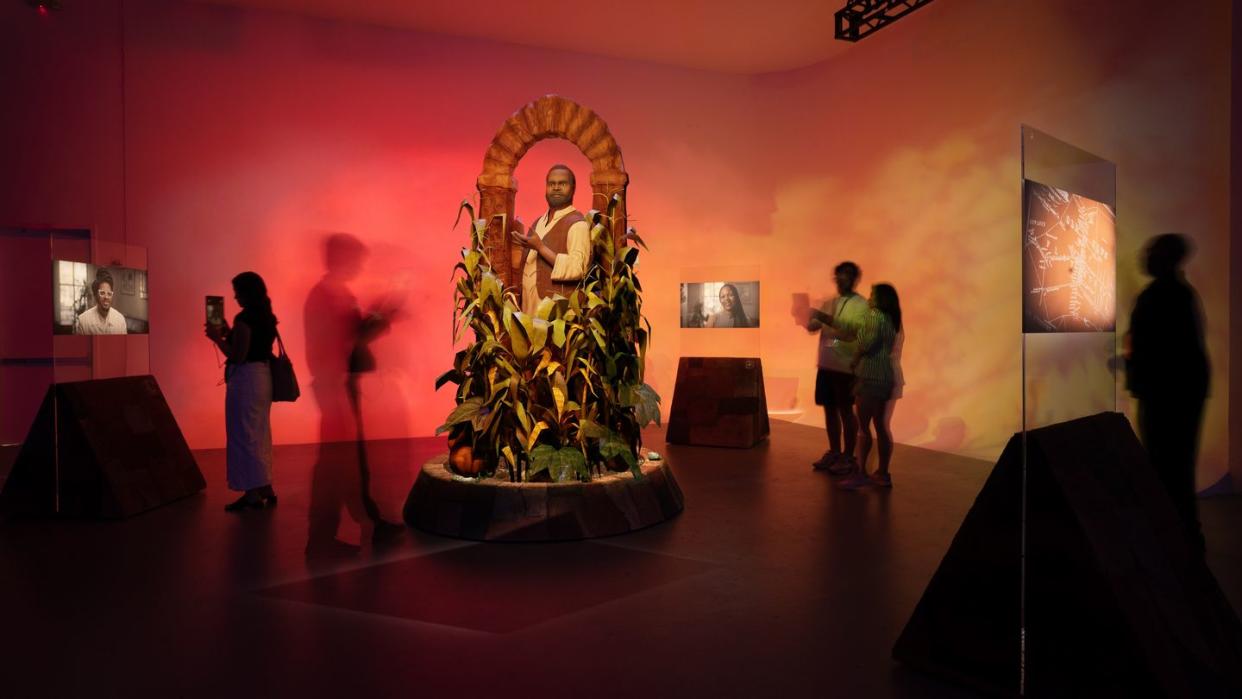
In a wonderful melding of past and future, Kinfolk, the nonprofit organization dedicated to unearthing and elevating intentionally erased aspects of Black history, has launched an immersive experience, on view at Spring Studios, for the duration of Tribeca Film Festival. Black Lands unearths and presents information and insight into three Black communities that helped shape New York City’s culture before being decimated and forgotten. The three historic landmarks highlighted are Land of Blacks, Flatbush Ancestral Burial Ground, and Pinkster Festival. Land of the Blacks was the first settlement in Manhattan where Black people were allowed to own land. Flatbush Ancestral Burial Ground is the last remaining section of an African Burial Ground dating back at least to the 18th century. During Pinkster Festival, Black Americans transformed a Dutch religious observance into a celebration of African cultural traditions. A historic figure related to each site is reanimated via augmented reality (AR) and, when activated, regales visitors with memories about each place and time: A digital incarnation of Manuel de Gerrit de Reus represents Land of the Blacks, Samuel Anderson speaks for Flatbush, and Sojourner Truth represents Pinkster. The installation, which will eventually be launched as a site-specific AR experience, is immersive in a deeply emotional way and an effective honoring of what has come before. Through June 17. —Camille Okhio
‘Saint Valentine’ at Nina Johnson Gallery
Miami
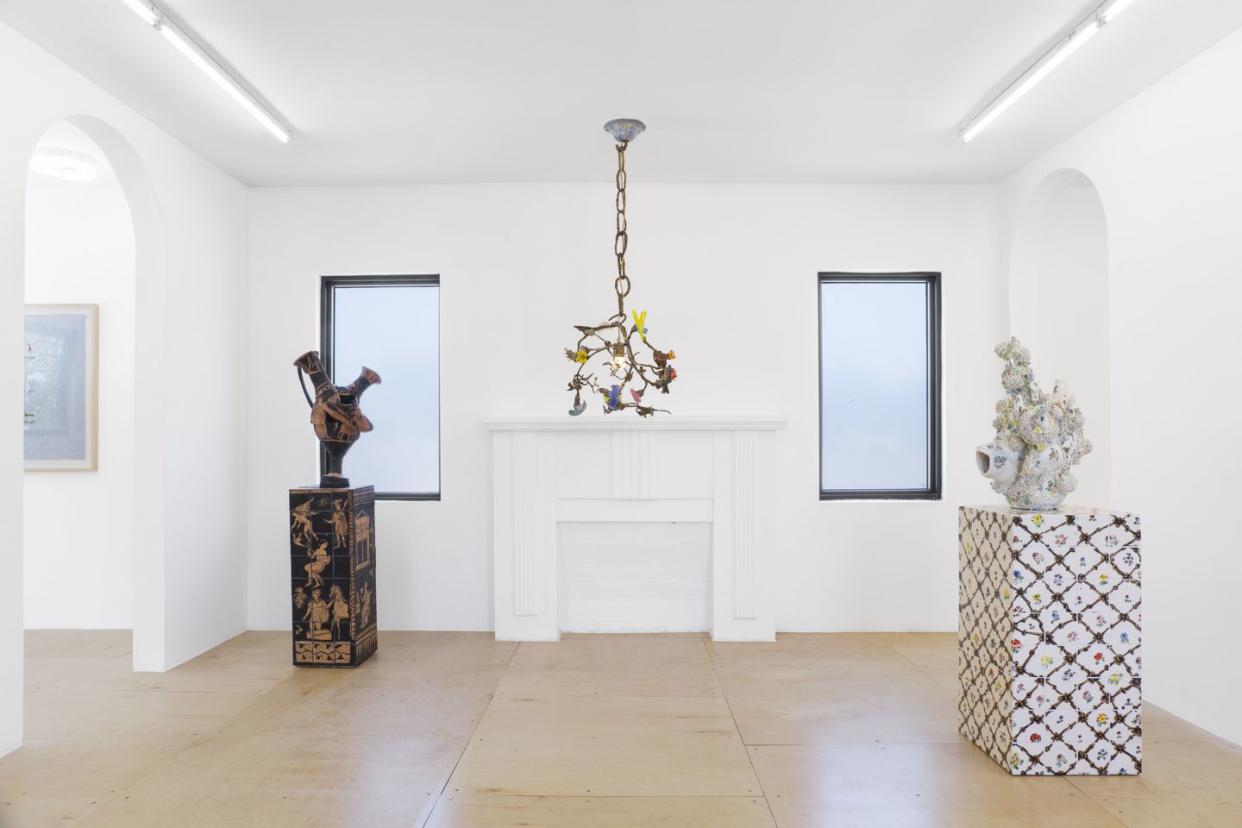
Valentine’s are as terrible as they are tender. The symbols for the day have been anesthetized by time but still very clearly represent the pain of love (think bleeding or punctured hearts, mischievous cupid with his sharp arrows, or Juliet’s hopeless suicide). The saint himself was beheaded by the Roman emperor Claudius Gothicus (though he’s often depicted sweetly with roses and songbirds). This melding of physicality and levity through mediums with domestic roots was the thesis for Nina Johnson’s group show of new work by four female artists. Francesca DiMattio reinterprets the static narrative quality of ancient Greek amphora, but here occasionally eschewing representation for more abstract subject matter. Katie Stout finds where the ornate and unsightly meet in her perfectly malformed bronze, glass, and ceramic inventions. Elsa Hansen Oldham keeps the female tradition of communicating through embroidery alive with her hand-stitched characters, and Anna Betbeze makes paintings out of flokati rugs that both repulse and attract. Through July 29. —C.O.
CFGNY in Residence
New York City
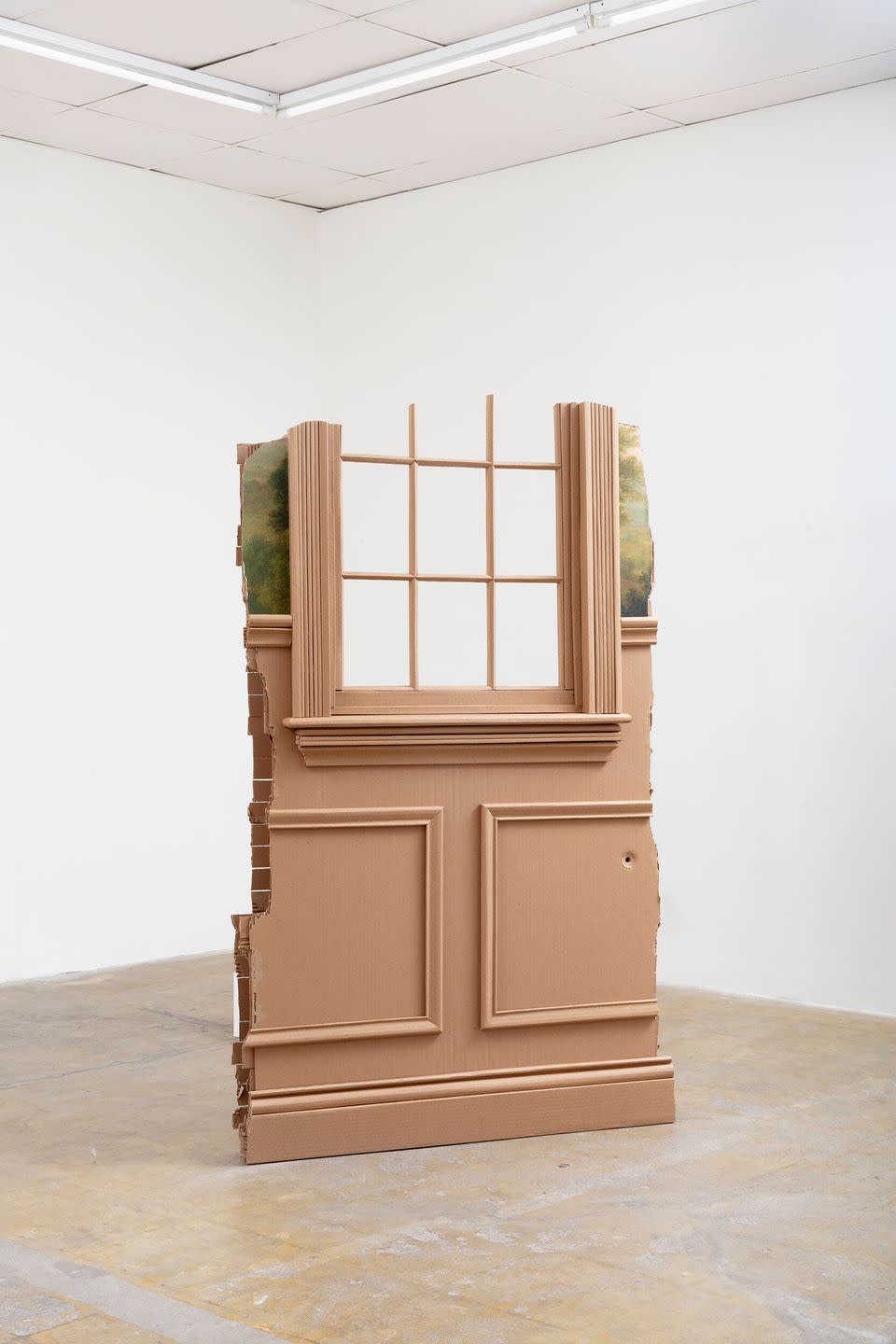
New York City–based artist collective CFGNY (a mutable acronym for Concept Foreign Garments New York) was founded in the turbulent year of 2016 with a focus on fashion as a readymade medium for exploring identity. The city itself, though, has always played a central role in the way the group invites discourse—one of their early shows was staged at a park in Manhattan’s Chinatown, where guests shared space alongside the simply curious. Their recent installation during Milan Design Week, following on the heels of their joint show with Wataru Tominaga at New York’s Japan Society, pushed CFGNY group members Daniel Chew, Ten Izu, Kirsten Kilponen, and Tin Nguyen to further explore domestic space as a context for fragmentation and racialization via facades from local Chinatown, which were upholstered with leather in partnership with the Italian shoemakers Marsèll. Their latest venture, a residency at Queen’s SculptureCenter, sees the quartet programming the gallery’s lower levels with a series of events and activations alongside a new body of work; a “bar” and shop take their musings on culture and commerce into the transactional realm, anchored by four two-person exhibitions that bring community to the fore. Through August 7. —Sean Santiago
‘Object & Thing’ at LongHouse Reserve
East Hampton, New York
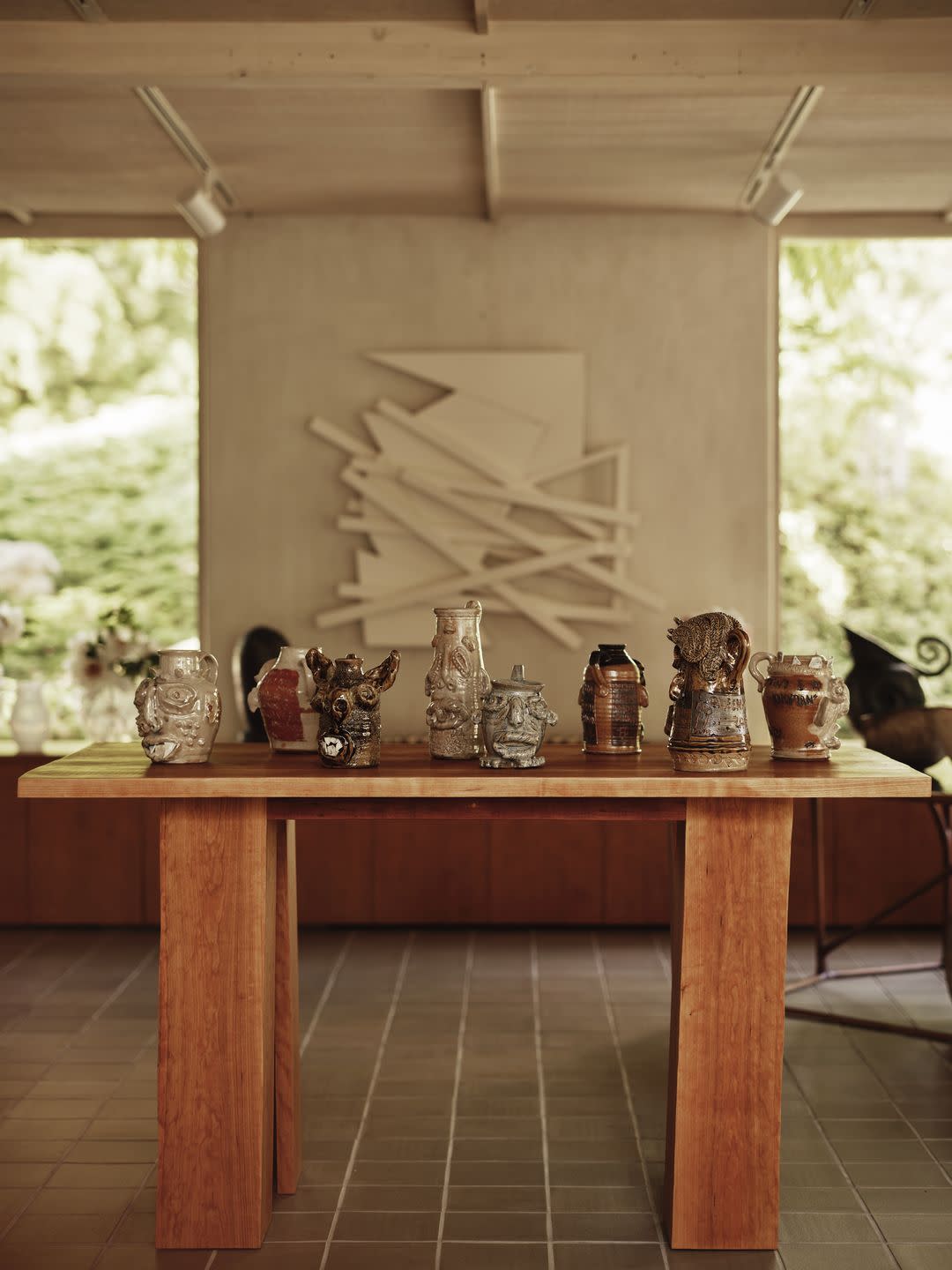
An anathema to the “white box” method of display, “Object & Thing” has utilized domestic interiors to the benefit of designers and artisans alike. For the past few years, the traveling exhibition of objects and furniture has moved from historic house to historic house. Last year more than 20 artists’ work was installed at the James Rose House in Ridgewood, New Jersey—ceramics, textiles, and ephemera scattered throughout a relatively obscure midcentury masterpiece. This year, the digs for the exhibition are a bit more recognizable: East Hampton’s LongHouse Reserve, the residence of the inventive late textile designer Jack Lenor Larsen. Co-curated by “Object & Thing” founder Abby Bangser and LongHouse curator-at-large Glenn Adamson, the exhibition covers the living room, gallery, and guest level of the postmodern house.
Of the nearly 100 works by 34 artists, a few stand out. Jim McDowell’s museum-worthy face jugs feel as if they have spirits of their own. One sits on a side table in Larsen’s bedroom; around the corner an African carving in a comparable visual language hangs above the bathtub. Elsewhere in the house, smaller works by McDowell, arranged haphazardly on a single table, join in conversation with each other. New textile works that take the appearance of floating, waterlogged silk by Megumi Shauna Arai exhibit the artist’s graduation from straightforward patchwork into more abstracted territory. On one windowsill, F Taylor Colantonio’s labor-intensive papier-mâché pitchers throb with cosmic energy, while Faye Toogood’s Family Busts guard a hallway like stylized lions. It’s Bangser’s most impressive effort yet. Through September 3. —C.O.
Ebony G. Patterson at the New York Botanical Garden
Bronx, New York
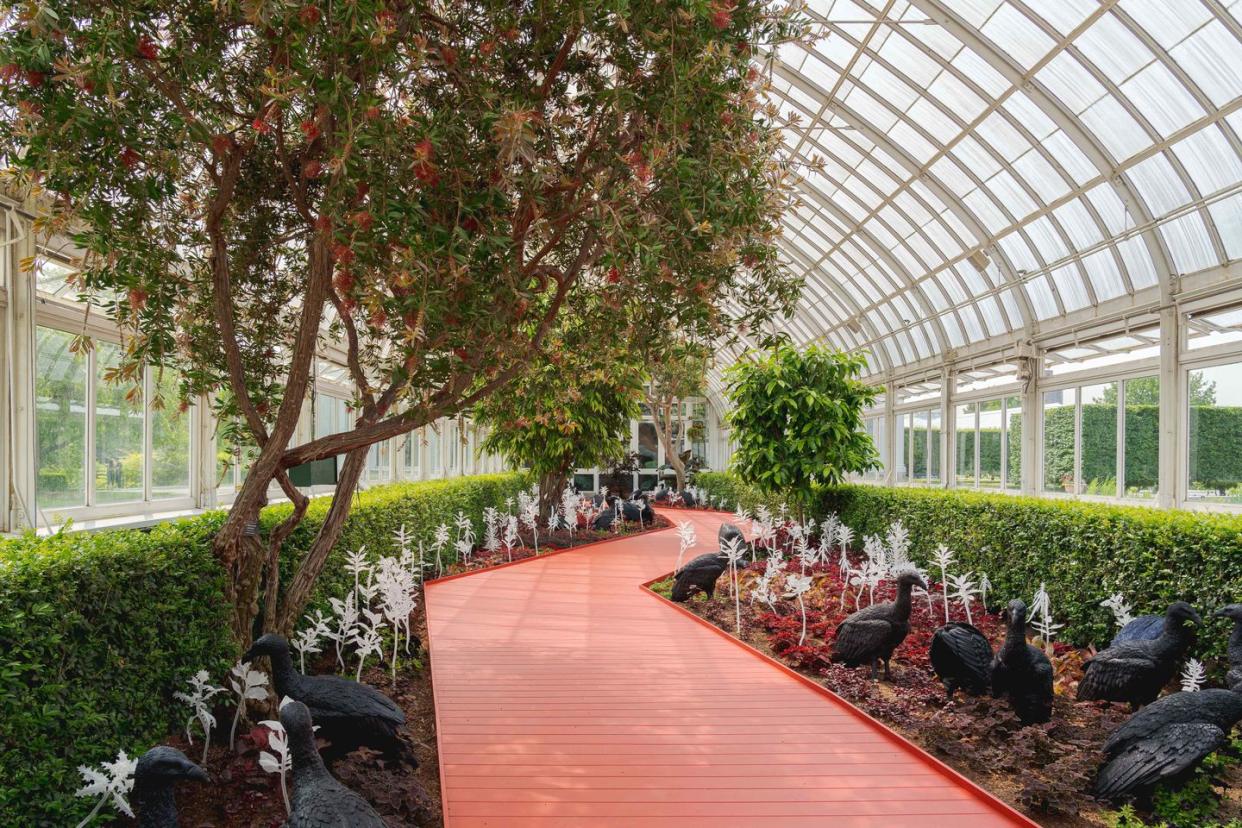
The New York Botanical Garden is not perhaps the first place you would think to see a show of contemporary art, which is perhaps what makes Ebony G. Patterson’s show “…things come to thrive…in the shedding…in the molting…” so effective. The installation covers a large portion of the botanical garden, starting outside of the historic Haupt Conservatory. Arranged among snapdragons, zinnias, and Mexican sunflowers, glittering vultures of Patterson’s creation stand like sentinels. Here the carrion are no less intimidating than they are in real life, though imbued with a godlike quality…almost wise. As you walk into the conservatory the vultures follow you, but now joining them are ghostly cast-glass sculptures of extinct plants Patterson discovered during her research at the New York Botanical Garden’s William and Lynda Steere Herbarium. It’s a graveyard among the living. Patterson’s works on paper hang in the Mertz Library building among her multimedia pieces, providing a supportive single dimension to the sculptural works seen before. In its sum the exhibition interrogates what can come from carnage, when wrought naturally, and the potential generative beauty that comes after decay. Through September 17. —C.O.
‘Dig Deeper’: Ancient Glass at the Corning Museum of Glass
Corning, New York
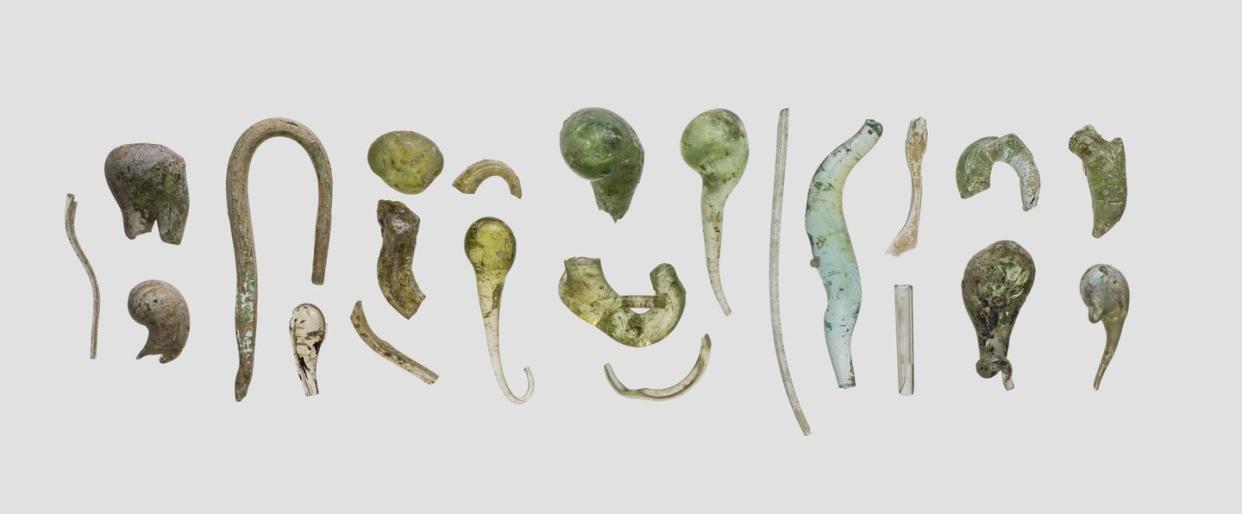
As much about excavation as it is about ancient industry, “Dig Deeper” is a unique survey of ancient glass, how it was made, and how it’s identified and studied. The exhibition focuses on one site in particular—Jalame, Israel—where the Corning Museum of Glass and the University of Missouri conducted an excavation between 1963 and 1971. The excavation was deeply useful, not necessarily for the intact examples of ancient glass found, of which there was only one (specifically from between 350 and 400 CE), but for the information gleaned about how ancient glassmakers made raw glass, and what products they made and exported out of that raw glass. Curator Katherine Larson paired examples from Corning’s own collection, with others loaned from the Israel Antiquities Authority, Department of National Treasures. What these objects—from a shallow glass plate to glass pitchers to glass refuse and offshoots—give insight into how the glass industry operated in ancient times. The show puts you in the shoes of the archaeologists themselves, with interactive components that invite you to touch ancient glass, hold glass-making tools, and try your hand at reassembling shattered vessels. Rounding out the exhibition are contemporary reproductions of ancient Palestinian glass by artist Dima Srouji. Through January 7, 2024. —C.O.
You Might Also Like
